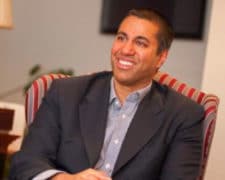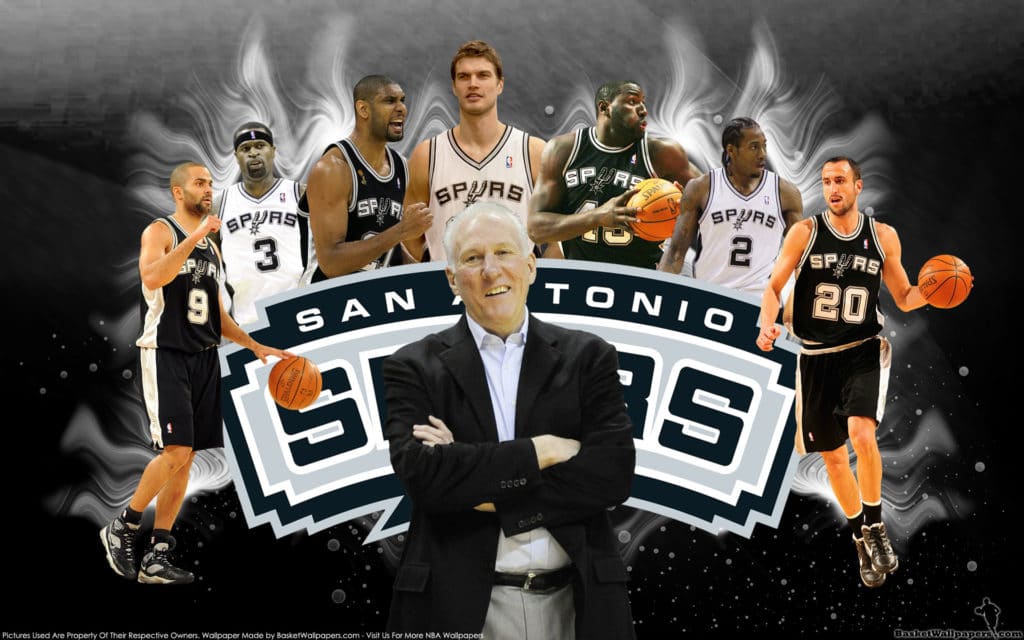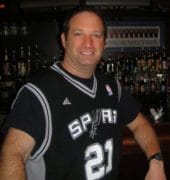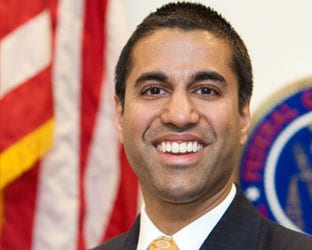 WASHINGTON, D.C. — Speaking this morning at the North American Broadcasters Association (NABA) Future of Radio and Audio symposium, FCC Chairman Ajit Pai joked about the weather in Toronto in February, when NABA hosts its annual radio summit, by making a humble suggestion.
WASHINGTON, D.C. — Speaking this morning at the North American Broadcasters Association (NABA) Future of Radio and Audio symposium, FCC Chairman Ajit Pai joked about the weather in Toronto in February, when NABA hosts its annual radio summit, by making a humble suggestion.
“Shouldn’t Mexico be the standing host? After all, I hear that it is thirty degrees warmer in Mexico City today,” he joked to attendees from Canada, the U.S., and Mexico gathered to hear his thoughts on the Future of Radio and Audio.
“Any discussion of that future needs to acknowledge that we are living in a time of historic technological change,” he remarked.
Yet, he pointed out, “In the midst of this high-tech revolution, where the Internet and mobile have seemingly changed everything, broadcast radio continues to thrive.”
Pai, known as a supporter of AM and FM radio, noted that (as Nielsen Audio points out regularly) each week some 93% of Americans over the age of 12 still listen to the radio. “[This] is about the same as a decade ago, and the decade before that, and the decade before that,” Pai notes. “That’s over 245 million Americans. And, they aren’t just listening to the radio just to catch a single from Adele. They are listening on average for 12 hours a week.”
This isn’t the first time that radio has flourished in the face of new media and technology, Pai reminded the crowd.
“When MTV launched in 1981, it aired ‘Video Killed the Radio Star.,’ he says of the Buggles modern rock hit. “Fast forward 36 years, and MTV hasn’t played videos in years, but virtually every American adult still listens to the radio.”
In fact, the enduring popularity of radio brought to mind Gregg Popovich, and a leading National Basketball Association franchise.
 “I know this is a meeting of the NABA, with support from NAB, but allow me to use an NBA metaphor,” Pai said. “To me, radio is like the professional basketball powerhouse, the San Antonio Spurs. I’m not sure how closely you follow basketball, but for two decades, the Spurs have been the sport’s least flashy yet most consistently successful team. They’re rarely seen as the dominant team in the league, but they are always in contention for a championship. So the talented and headline-grabbing Golden State Warriors might be mobile broadband. The powerful Cleveland Cavaliers might be gigabit fiber. But the steady-as-a-rock Spurs are radio.”
“I know this is a meeting of the NABA, with support from NAB, but allow me to use an NBA metaphor,” Pai said. “To me, radio is like the professional basketball powerhouse, the San Antonio Spurs. I’m not sure how closely you follow basketball, but for two decades, the Spurs have been the sport’s least flashy yet most consistently successful team. They’re rarely seen as the dominant team in the league, but they are always in contention for a championship. So the talented and headline-grabbing Golden State Warriors might be mobile broadband. The powerful Cleveland Cavaliers might be gigabit fiber. But the steady-as-a-rock Spurs are radio.”
What’s behind radio’s enduring appeal, Pai asks?
One of the best explanations he’s heard comes from an unlikely place: Silicon Valley.
Pai explained that a few years ago, venture capitalist John Doerr suggested that the future of digital media is being defined by the convergence of three forces: social, local, and mobile. “He argued that whoever can harness these three forces would be best positioned to succeed in the digital future,” Pai says. “Now, when you think about social . . . local . . . mobile, that’s radio!”
Pai quoted iHeartMedia executive Tom Poleman, President of National Programming Group, by calling radio “the original social medium.” He then recalled his firsthand travels to stations as diverse as KZPA-AM 900 in Fort Yukon, Alaska, in a largely wilderness area north of Fairbanks, and to the first commercially licensed radio station in the U.S.: KDKA-AM 1020 in Pittsburgh.
The new FCC Chairman even quoted the cult cinematic classic The Big Lebowski, explaining to NABA attendees, “In that movie, ‘The Dude’ (played by Jeff Bridges) famously noted that his rug really tied the room together. Well, in Parsons, Kansas our local radio station, KLKC, really tied the community together. Whether we were listening to the Parsons High School basketball team playing in the state championship or Kansas City Royals games during that magical World Series season of 1985, KLKC was an integral part of our small town. And I am proud to say that KLKC today continues to play that role in Parsons, and is run by some good friends of mine … That doesn’t give them a pass on meeting their public file obligations, I hasten to add.”
In making his point that radio is mobile, Pai said he often uses the TuneIn mobile app to listen to KLKC.
“As consumers increasingly expect to access their favorite content whenever they want, wherever they want, the fact that radio is a mobile medium becomes an increasingly important strength,” said Pai, adding, “It’s not just listening on the car radio. Radio stations are leveraging new technologies to connect with listeners … With two young children and a job that keeps me pretty busy, being able to listen to local programming on-the-go has been a godsend.”
He added a fourth fundamental strength, that radio is vital.
“When disaster strikes, often knocking out cell networks and Internet service, over-the-air radio is a lifeline, providing the latest weather forecasts or directions on where to seek shelter or relief assistance,” Pai said. “After hurricanes or tornadoes or fires or floods, time and again, we see an exponential surge in radio audiences. So: social, local, mobile, and vital. Those are the reasons why I believe radio can thrive in the future.”

RBR + TVBR OBSERVATION: Wait … did freshly minted FCC Chairman compare radio to our favorite NBA team and make a reference to “The Big Lebowski” in his official remarks at the NABA Future of Radio and Audio symposium on Thursday (2/16)? Mr. Pai: You just may be our new best friend. Your passion for radio, and your commitment to AM radio, is breathtaking. Your use of TuneIn to listen to your hometown radio station speaks to a point our Editor-in-Chief has been hammering for years. Radio is clearly wondering how to get a physical radio in the hands of Generation Y, a top concern discussed in our Feb. 16 Media Information Bureau Intelligence Report featuring the details of a new Jacobs Media study. A great solution: TuneIn, and perhaps NextRadio, syncing with devices like Alexa that can bring radio stations to the home via voice command. While Pandora may be spinning its yarns while it still has yet to bring to market its top-tier on-demand premium streaming option, iHeartRadio has beaten this Silicon Valley stinkbomb already. How? It has the top-tier on-demand premium streaming option … and a plethora of live-and-local AM and FM stations that can be heard no matter where you may be. That’s the future of radio, and it is absolutely wicked awesome that we have a FCC Chairman who understands this. Go Spurs Go, and Go Radio Go!




